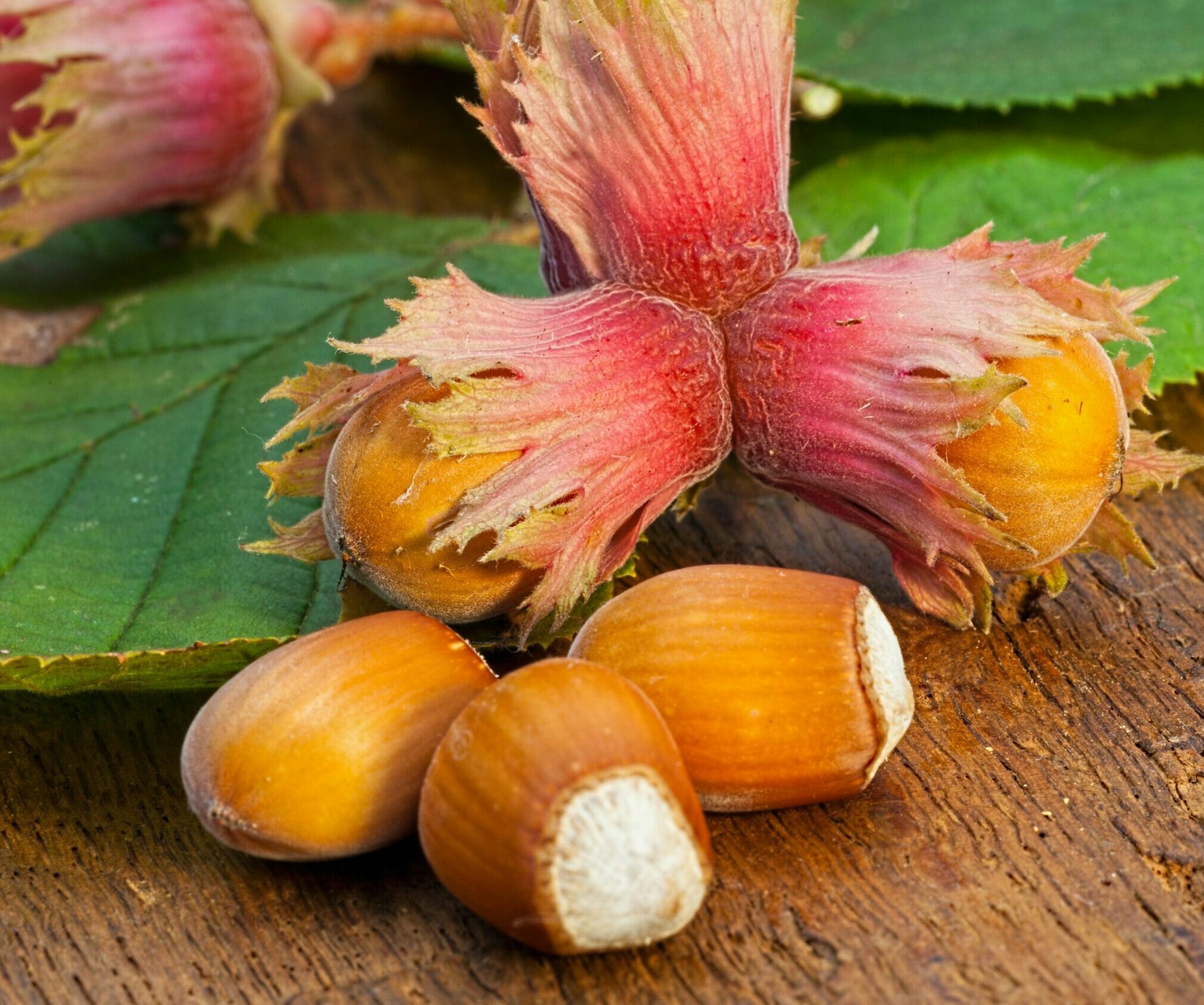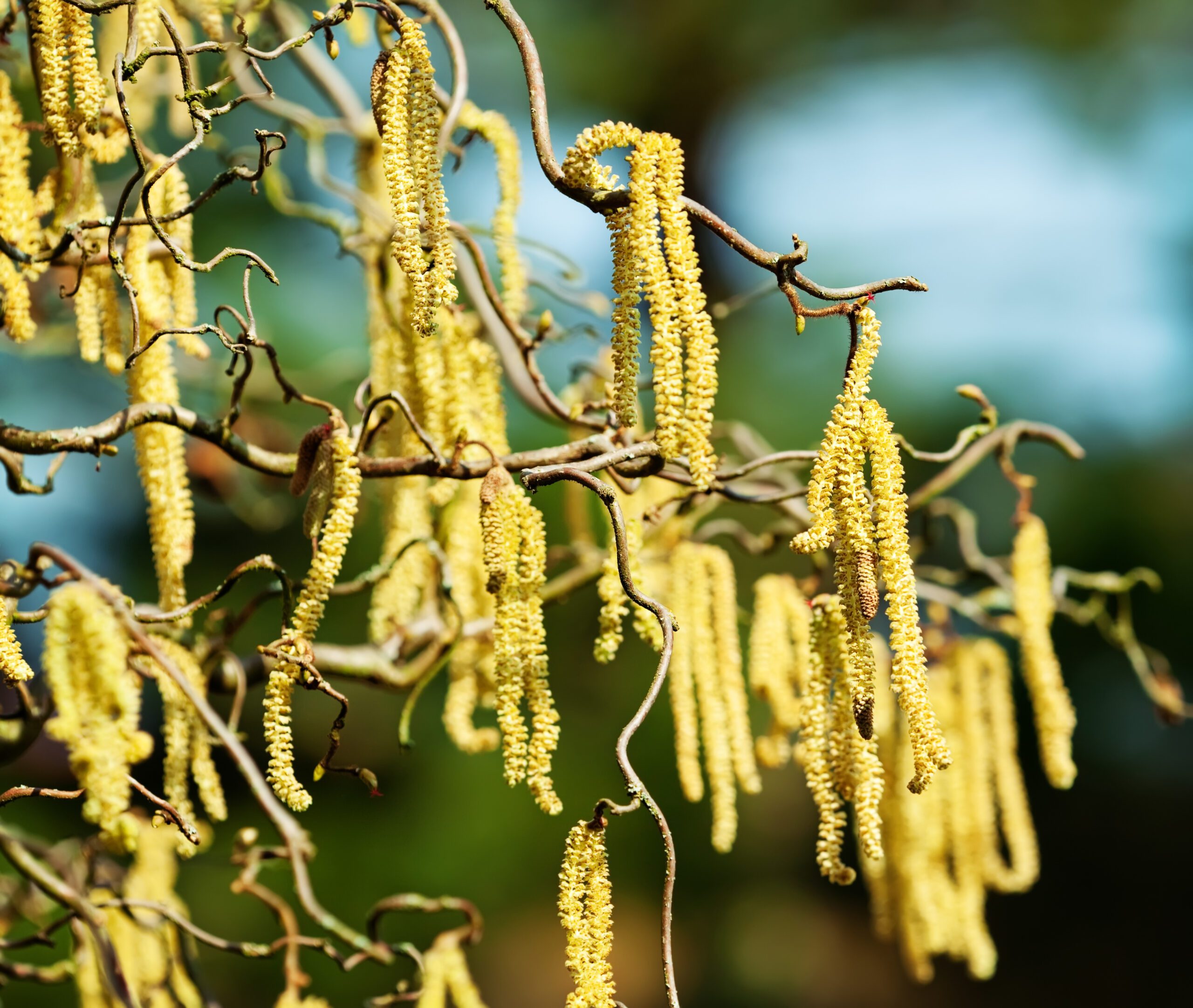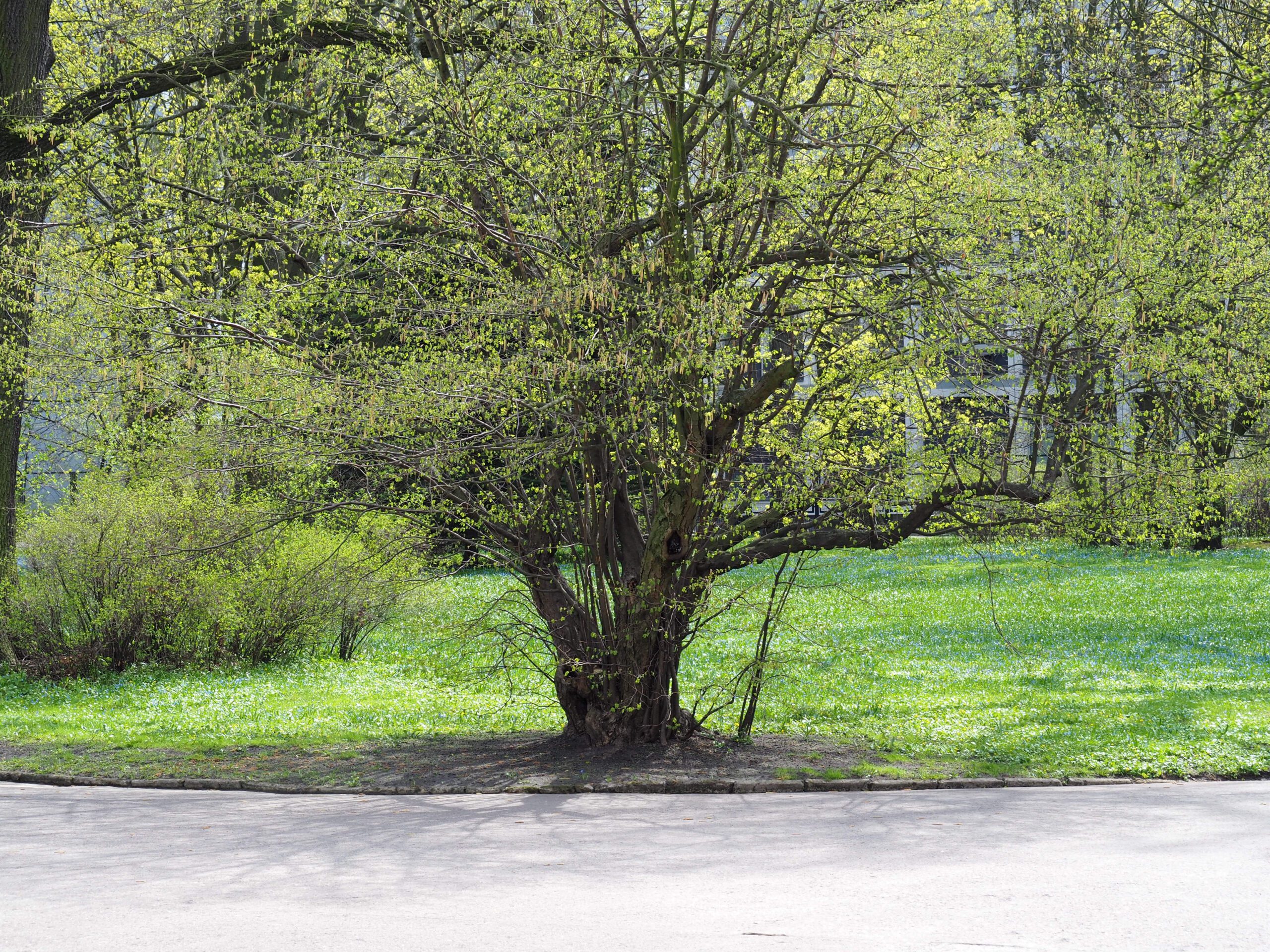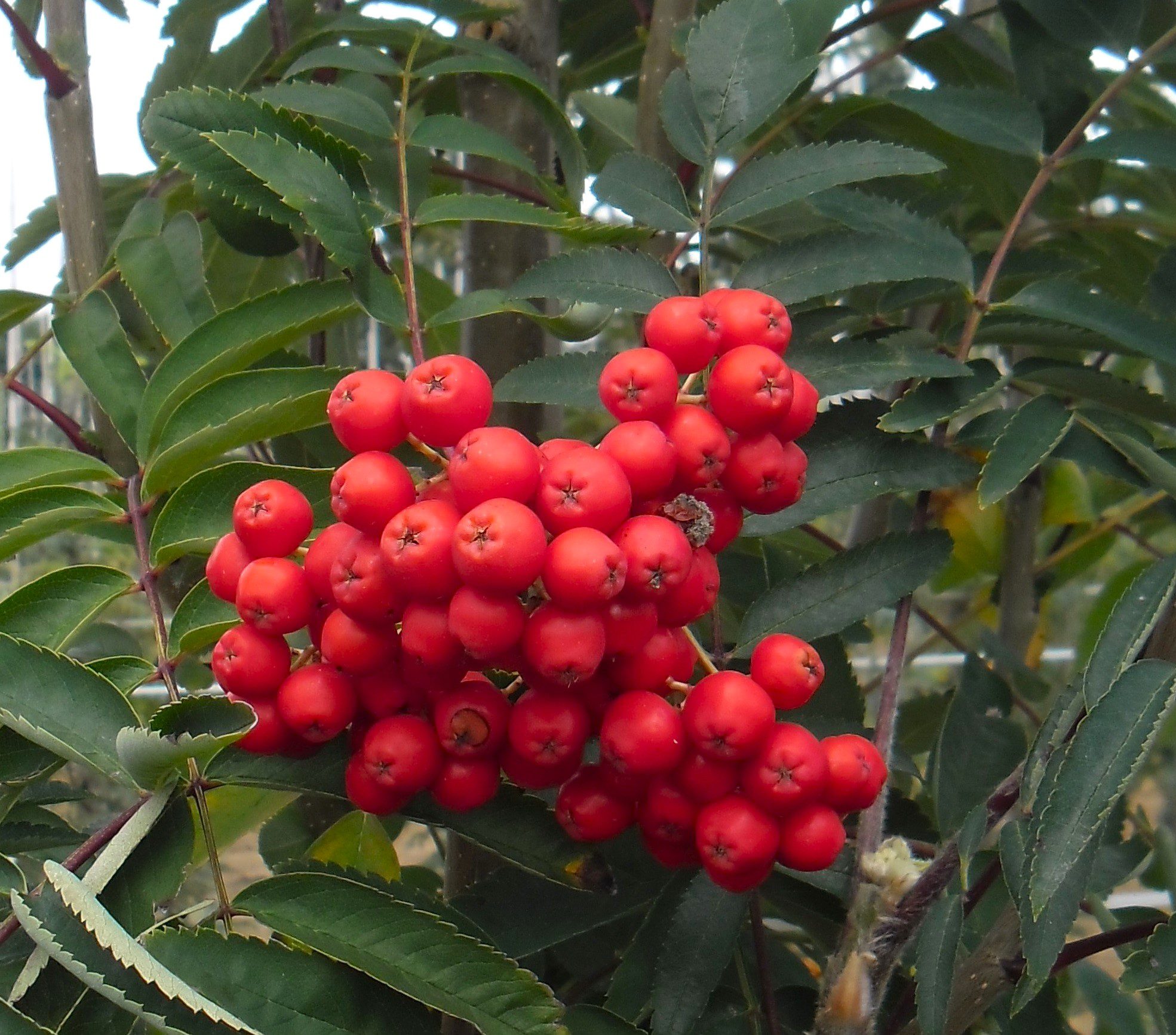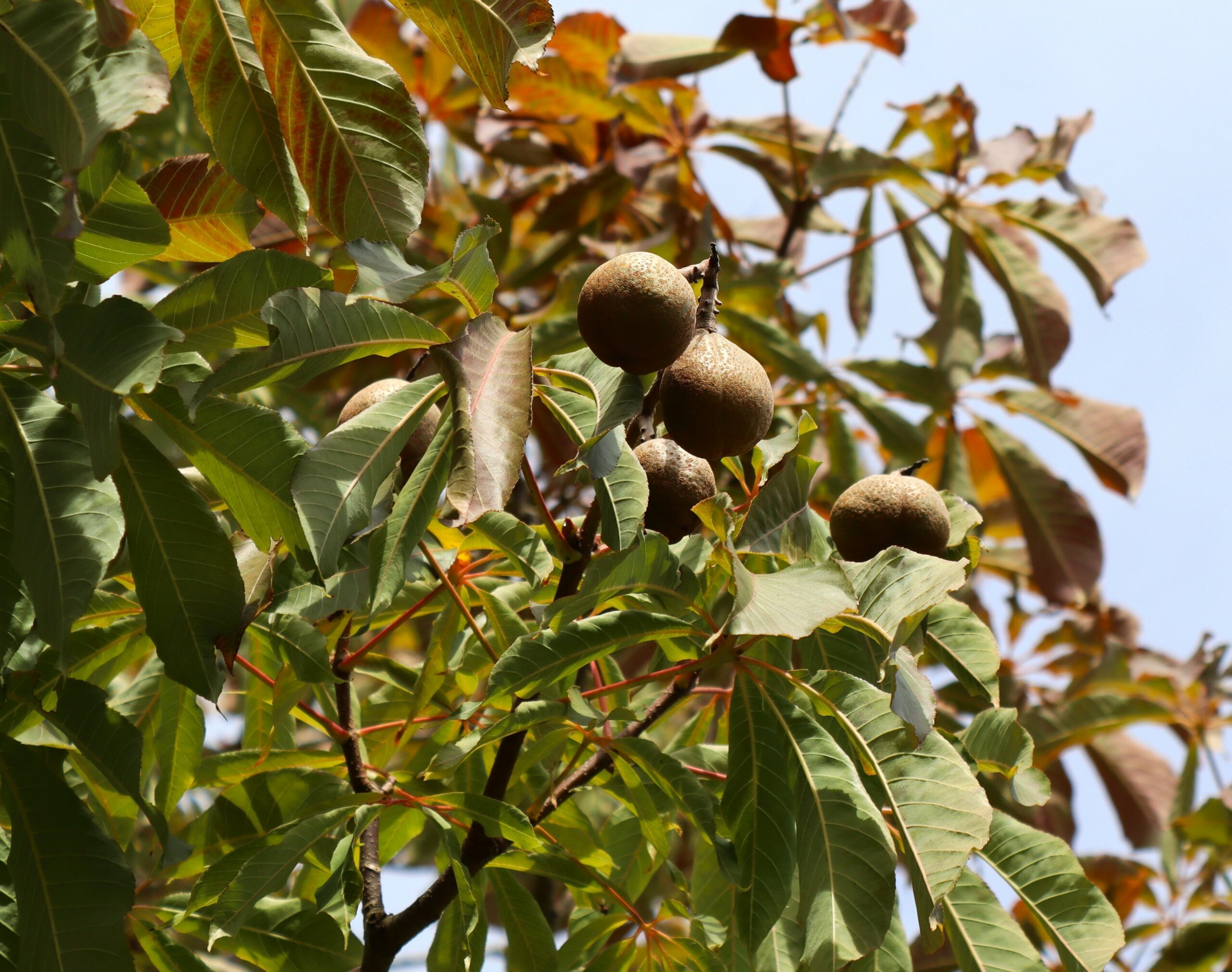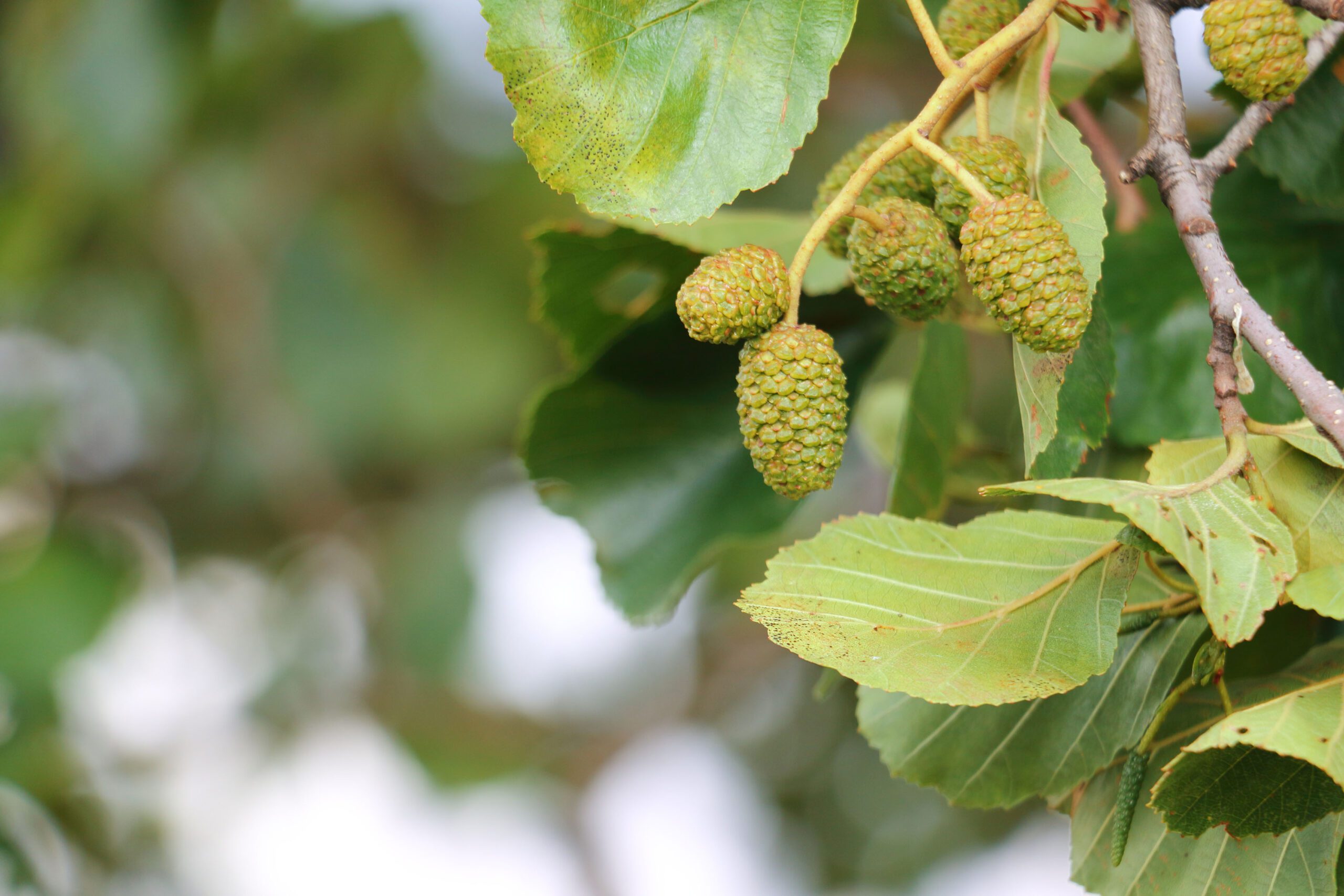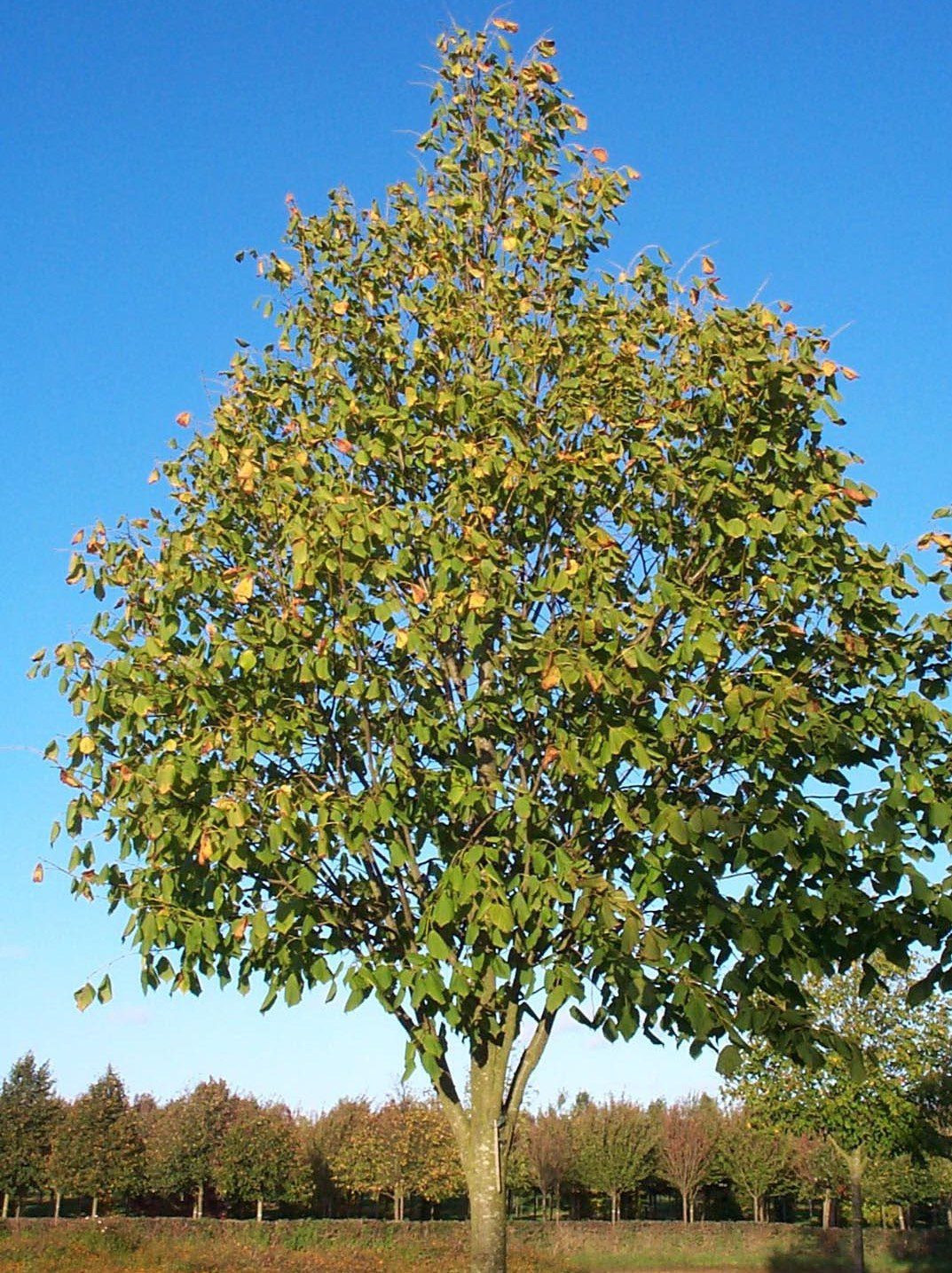Tree Information
Specialities
Tolerances
Wet Soil: High
Dry Soil: Medium
Lime: Medium
Corylus avellana, commonly known as the European Hazelnut, is a deciduous shrub or small multi-stemmed tree, native to Europe and parts of western Asia. It’s highly valued for both its ornamental qualities and its edible nuts.
The leaves of Corylus avellana are simple, broadly ovate, and have a serrated margin. They’re dark green on top and have a slightly hairy texture, whilst the lower side is paler and downy. However, one of the notable features of the Corylus avellana is its catkins, which are cylindrical flower clusters appearing late winter or early spring. Male catkins are long and yellow and resemble lambs’ tails. Female flowers are smaller and appear bud like. Once pollinated they will turn to edible fruits known as hazelnuts. Encased in a husk, once ripe it’ll split open and reveal round or oval shaped nuts, which are prized for their rich flavour and culinary versatility.
A delightful small tree known for its attractive branches, elegant leaves, and bountiful harvest of hazelnuts. It’s cherished by garden designers, nature enthusiasts and food lovers alike.
Visit our Useful Resources for in-depth guides
Discover guides to help you with specifying your trees, caring for your trees and understanding the weights and dimensions of trees.
Useful ResourcesSize
Small
6m high x 6m wide after 25 years
Environment
Great for woodland planting, and hedgerows.
Canopy
Often multi-stemmed. Habit is dark, dense and umbrella shaped. Broad and upright growing.
Foliage
Hairy, round, and matt green. Broadly ovate with a serrated margin and a slightly hairy texture. Yellow in autumn.
Flowers
Brown inconspicuous catkins in early spring.
Fruit
Edible nuts in a partly enclosed husk.
Resilience
Can tolerate a range of soil types. Prefers well-drained soils. Hardy and adaptable, this tree can grow in both full sun and partial shade. Will withstand wind and partial paving. Frost and pollution resistant.
Wildlife
Provides important ecological benefits. Its dense foliage offers shelter and nesting site for birds, whilst its catkins provide early pollen and nectar for bees and other pollinators. Its branches are commonly used to weave fences which make fantastic hiding spots for insects.
Make an Enquiry
Enquire below and speak to one of our expert team. For trades only, for general public enquiries click here.
Find Trees For Your Project
View Our TreesSpeak to a Member of Our Sales Team
Make an Enquiry
